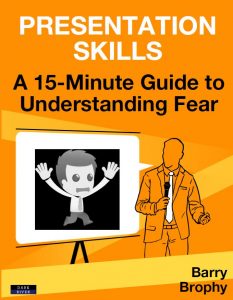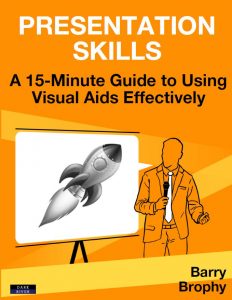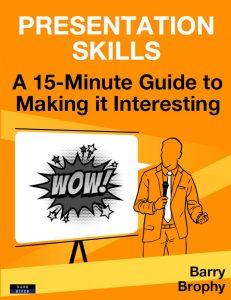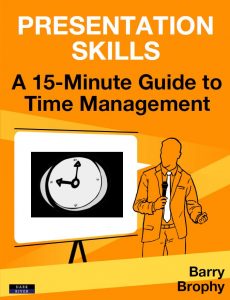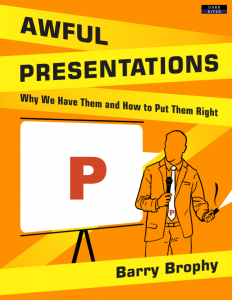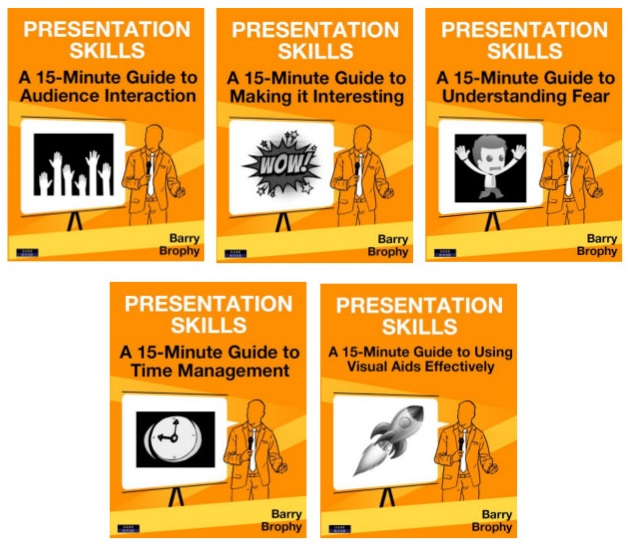
Presentation Skills
This ebook series uses condensed and curated content from the author’s acclaimed title Awful Presentations: Why We Have Them and How to Put Them Right; content that has been redeveloped into short, focused, and practical 15-minute reads. When you purchase through links on our site, we may earn an affiliate commission at no additional cost to you.
The complete series is comprised of:
- Presentation Skills: A 15-Minute Guide to Understanding Fear
- Presentation Skills: A 15-Minute Guide to Using Visual Aids Effectively
- Presentation Skills: A 15-Minute Guide to Making it Interesting
- Presentation Skills: A 15-Minute Guide to Audience Interaction – the Magic Ingredient
- Presentation Skills: A 15-Minute Guide to Time Management
Presentation Skills: A 15-Minute Guide to Understanding Fear
The biggest problem people have, when giving with presentations, is nerves. For many, they can be crippling. But our understanding of this issue is all wrong. Nerves on the day actually make you better, not worse. You simply need to recognise them and roll with them. There is another type of fear, however – which can be termed ‘caution’ – that ruins the content of most presentations before the speaker even stands up to talk.
Designed as a 15-minute focused and practical read, this ebook will help you to calm your nerves and use them to your advantage, while also understanding ‘caution’ and preventing it from ruining your presentation content. It will look at:
- Using nerves to your advantage
- Reducing nerves by reducing the sources of nerves
- Reducing nerves by centring your talk on the audience
- Reducing nerves by conversing with your audience naturally
- Understanding the difference between ‘nerves’ and ‘caution’
- Observing how caution flattens presentation content, avoiding the pitfalls
Presentation Skills: A 15-Minute Guide to Using Visual Aids Effectively
We have all experienced ‘Death by PowerPoint’ where presenters fill slide after slide with bullet points and then read them out, word for word. This is not just bad for the audience but it is also bad for the presenter who ends up gawping at his or her own slides to remember what was written there. Why do people do this – again and again – and what should you do instead?
In this 15-minute focused and practical read, we shall examine how the basics of how images work in a presentation and give you simple guidelines on how to construct effective visual aids. It will look at:
- The three reasons presenters are obsessed with bullet points
- Why they don’t work
- How to best use bullet points better (if you have to)
- How images work on three timescales: attention, explanation, memory
- How to get the most from images
- How to construct simple mobile visual arguments
Presentation Skills: A 15-Minute Guide to Making it Interesting
Many presenters think that their content is boring and look for ways to spice it up. This is totally wrong-headed. In truth, no topic is boring if you centre your presentation not on what you know, but on what the audience needs.
In this 15-minute focused and practical read, learn how to properly orient your presentation so you are communicating not facts, but insights. It will show you how to ‘advise’ your audience – not just throw information at them – and in that way become a compelling communicator. It will look at:
- How ‘boredom is relative’ and how no subject is inherently boring if it addresses an audience need
- The relationship between the presenter (expert) and the audience (interested group)
- How this relationship operates in communications that do work
- Setting a realistic aim
- Structuring your content around this aim
- Using the aim to energise your delivery and give you conviction
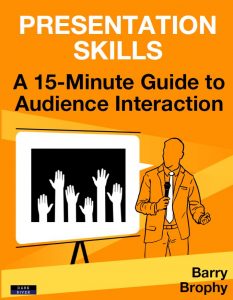
Presentation Skills: A 15-Minute Guide to Audience Interaction – the Magic Ingredient
The ability to interact with the audience is a presentation’s greatest strength over other forms of communication, and yet it is a feature that many presenters shun. In a breathless effort to ‘cover’ their material, they shut the audience out. Interaction not only allows the audience to ask important questions, it creates an inclusive atmosphere where people – even if they don’t interact – are more enthused and involved.
This 15-minute read will describe the many different levels of interaction you can introduce into your talks depending on the audience and your natural presentation style. It will look at:
- How interaction is a ‘feeling’ not an ‘activity’ and cannot be forced
- Tips for getting the audience to both ask and answer questions
- Tips for creating an inclusive, conversational feel
- Less intrusive forms of interaction like shows of hands and rhetorical questions
- Dealing with questions
- Prompting interaction long after the presentation has finished
Presentation Skills: A 15-Minute Guide to Time Management
Despite the fact that most people don’t like giving presentations, the majority of them run over time. Presenters always seem to have too much to say and find it impossible to cram years of knowledge into minutes of presentation. However, we don’t have this problem in conversations where we slide in and out of different levels of complexity effortlessly.
This focused ebook will explain how a presentation fits into a broader chain of communication, enabling you to decide what should go into the presentation and, crucially, what should be left out. It will look at:
- How conversations move up and down through different levels of complexity
- How conversations are naturally listener-focused, and how presentations should also be
- The communication chain and where a presentation fits
- Setting a practical presentation aim
- Using ‘audience need’ to drive the selection and organisation of content
- Knowing what to leave out
This series has been developed from Awful Presentations: Why We Have Them and How to Put Them Right
Book Categories: Barry Brophy, Business and Self-Help.

